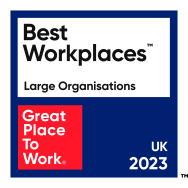Power Apps FAQs
Where can I see a live demo of Power Apps?
Your Phoenix account manager can book in a live demo for you. Please contact us on [email protected].
Is Portal essentially the replacement for ADX Open Source Version when going from On-prem to Cloud and how difficult is that move likely to be?
Power Platform Portals are officially an alternative offering to the ADX Open Source Version, but in context of On-prem to on Cloud, then we consider this a replacement. We can move your existing records for ADX configured entities using a tool provided by Microsoft, but there would be an element of consultancy to bring this up to scratch with a fully working portal. Your biggest investment would likely be data migration, as the portal move process is relatively straight forward.
Can Portal statistics give a breakdown of client types e.g. how many users are using tablets or phones to access Portal?
Yes, providing you use a combination of Centre of Excellence, Google Analytics, and/ or Microsoft Clarity. We have a five-day Power Platform Governance offering that helps you install Centre of Excellence and review your current circumstances in a managed way. Our consultants are skilled in adding analytics to portal implementations, which would be treated as consultancy in a larger project.
For Portal and high-volume demand, would RPA be an alternative to API integration, or are there issues?
As long as you are not multiplexing, then this is entirely possible. Multiplexing is defined by trying to get around the cost of licensing the product, and therefore any solution that achieves this is strongly discouraged and not recommended. RPA should be used if the other service does not have a readily available API, and licensing for high-volume demand becomes cheaper per login as you move towards the recently announced tier five.
Do you have examples of Portals or Power Apps being used to communicate with volunteers e.g. alerts, tasks, notes, attachments, internal system mail, confidential conversations?
Yes, we have a series of clients that have implemented volunteer functionality in Model Driven, Canvas, and Portal applications. To discuss further with client specific examples, please contact your representative at Phoenix or QUANTIQ.
For customer self-service, does a customer need to have an account?
To access account specific details a customer will be required to authenticate as they log in to the Portal and they must have an account available within your system to do so. Users can engage with a Portal anonymously; however, they will not be able to view personalised content.
What’s the difference between a standard and premium connector?
Standard connectors are those included as standard within your Office 365 E1 to 5 licenses. These include elements such as Teams, SharePoint and OneDrive for Business. Premium connectors offer additional capability to extend your Power Apps using other Microsoft and non-Microsoft tools. A user who requires the use of a premium licences will have to be covered by a Power App or Dynamics licence.
Can a student use a Portal and an app?
Yes, student engagement portals are a great use case for Power App Portals.
What rights do you get for Automate with a Power App licence?
Power Apps licences include use rights for Power Automate for the purpose of automating workflows associated with the Power App. See page 15 in Microsoft’s Power Apps, Power Automate and Power Virtual Agents Licensing Guide.
What happens if a user uses an app but doesn’t have a licence?
For Model Driven and Canvas apps, they will not be able to access the app and this check would be made prior to logging into the app, even if a direct URL was shared. For Portals, due to the ‘unit’ measurement of pricing (per login, per 24 hours or per page view), Microsoft take a retrospective assessment if there are any spikes in volumes, and will re-assess licensing requirements upon your next renewal. Their allowances and restrictions in this sense are similar to their allowances and restrictions in storage capacity.
Does external audience mean no account on tenancy?
External users are users that are not employees, on-site contractors or on-site agents of a customer or its affiliates. Commonly this will be users who do not reside in your Azure AD. For more information, see page 7 in Microsoft’s Power Apps, Power Automate and Power Virtual Agents Licensing Guide.







